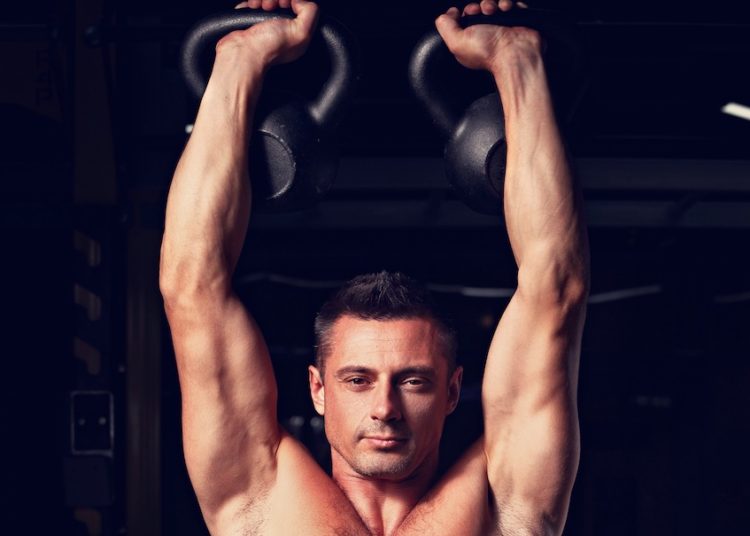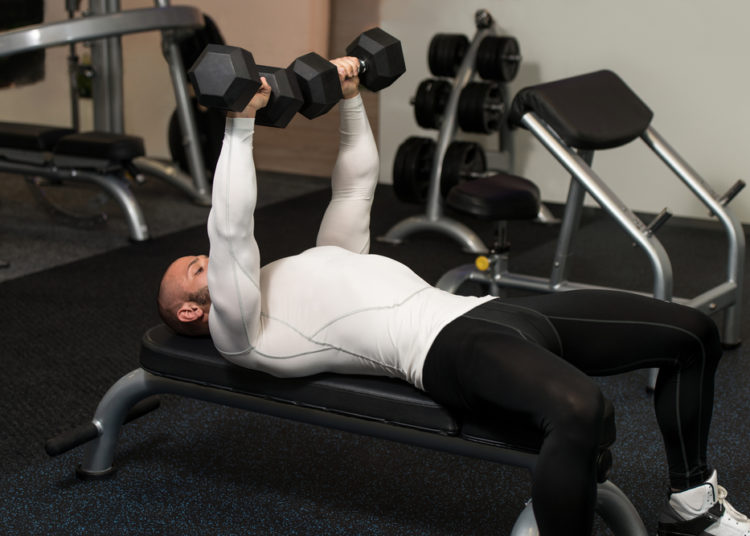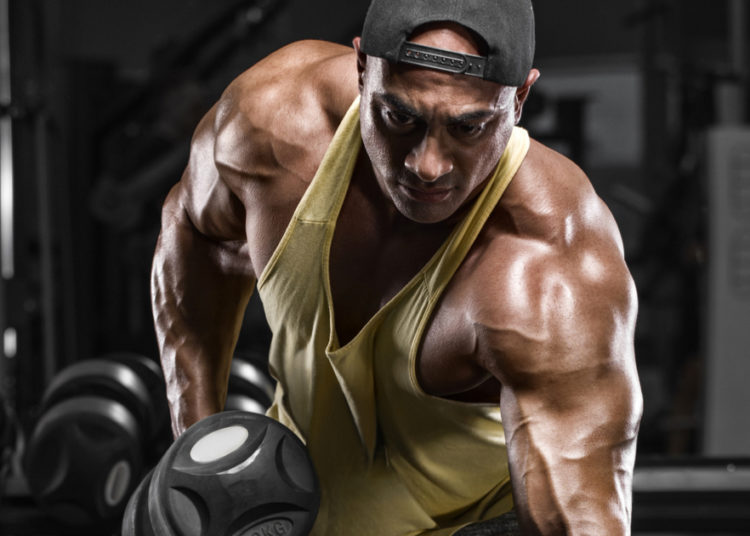With the exception of 1-rep max smith machine squats (just say no), just about any exercise can serve a purpose in a well-designed workout routine.
But most trainers will tell you that some exercises are more important than others, that there are important, healthful, injury preventing, critical exercises that should make up the base of your training or at least make an appearance in a week’s training schedule. Of course, everybody has different answers to the question of Which Exercises Should Not Be Ignored, and if you’re training for a specific sport (like powerlifting) then this won’t really apply.
But in my (obviously subjective) opinion based on a decade of lifting and six years of writing about fitness and interviewing smart coaches, if you’re an average person looking for a strong, healthy, well-rounded physique that will help you stay mobile and injury free as you age, you should be good at these lifts.
Editor’s note: This article is an op-ed. The views expressed herein and in the video are the author’s and don’t necessarily reflect the views of BarBend. Claims, assertions, opinions, and quotes have been sourced exclusively by the author.

1. Front Squat
I don’t think everyone has to do back squats. If you’re competing in powerlifting, a sport where your back squat is a measure of your performance, then fine. If you want to be good at it or you just enjoy them, go ahead. But for the average person who wants powerful legs and a strong, resilient body, back squats aren’t necessary. It’s an enormously technical lift that takes a lot of coaching to get right, it puts a lot of pressure on the low back, and it’s easy to put too much on the bar than you can handle.
[Learn more in our comparison of back squats vs front squats.]
I say front squat instead. It’s dynamite for flexibility, it strengthens the upper back, hips, and core, and it blows up the quads like nothing else. It’s easier to learn good form and a lot harder to accidentally use too much weight, since you simply won’t be able to keep the bar in the front rack.
I know what you’re thinking: but back squats work the hamstrings and low back more. Well, you should try…
2. Romanian Deadlift
Easily my most hated exercise of all time, the fact that it isn’t fun doesn’t mean it should be ignored. Hinging is a fundamental movement and even if you’re deadlifting conventional (and especially if you’re not), RDLs are important.
Not only is it a dynamite core movement, RDLs are much more dependent on hamstring and hip strength than the conventional deadlift and it’s crucial to have a good, healthy RDL before you try to excel at conventional. A good RDL will keep your regular deadlift from being driven too much by the traps and erectors, so they’re great for lowering your risk of injury.
[Learn more in our comparison of RDLs and conventional deadlifts.]
3. Turkish Get Up
The only reason this shouldn’t make a list of best lifts is if you don’t think this complicated, several-movements-strung-together exercise counts as one lift. But since this is my list, I’m including it, because the TGU is something everybody should train.
Shoulder stability. Multiplanar movement. Lateral strength. Proper hip function. Unilateral overhead strength. Lower body mobility. Core stability. Proprioception. It’s a fiendishly complicated move but this is one that’s worth nailing. Do it as a warm up or a cool down and every bit of your fitness will improve.
[See our complete guide to the Turkish get up.]

4. Kettlebell Overhead Press
I wrote a whole article on why the kettlebell OHP is better than the barbell OHP, but in short: the kettlebells do a better job of recruiting the upper back, they’re better at making sure one shoulder doesn’t take over for a weaker one, they’re better at improving scapular health, and even just holding the kettlebell in the rack requires more tension than with a dumbbell or barbell. That strong rack position will have carryover to your other lifts and do a better job of improving your posture.
It’s harder to increase weight because kettlebells don’t usually come in one-pound increments, fine. So barbells can still have their place, but the KB OHP is a better lift and it should be given a prominent place in your shoulder training.

5. Sumo Deadlift
Yes, it’s good to be proficient at both sumo and conventional deadlifts. But if you’re getting nice and strong in your RDLs, I’d say it’s more important to get in sumo deads than conventional especially if, again, you’re a regular person who wants to be strong and not a competitive weightlifter.
Besides the important facts that it’s easier to learn and puts less shear force on your spine than conventional, sumo puts more meat in your quads and does a better job of recruiting your hips and more importantly your glutes, the biggest muscle group in your body and one that is way underemphasized by most athletes. Strong, healthy glutes help to relive pressure on the back and knees and they’ll improve any hinge and squat.
6. Pallof Press
Nobody does enough lateral strength movements. The Turkish get up will help your obliques but the anti-rotational Pallof press brings it home. This is a full body exercise but it works the entire core: obliques, transverse abdominals, and rectus abdominis, which all learn to stabilize the upper body and make your big compound movements safer and more effective. The core isn’t for sit ups, it’s (primarily) for stabilizing and resisting extension and pelvic tilt. The Pallof press accomplishes all of this.
But it’s not just a core exercise, you’ll feel your glutes and scaps working as well. Do Pallof presses at the start of a workout to prime your core for big movements, or at the end with the rest of your core work.
[See our complete guide to the Pallof press here.]

7. Farmer’s Carry
Also called the farmer’s walk and loaded carry, it’s truly criminal how many people don’t incorporate carries into their routines. It looks pretty tame to the onlooker, but just walking with a couple of heavy dumbbells or kettlebells in your hands does wonders not just for grip strength — an important predictor of mortality — but the time under load helps to increase muscle gain, it’s great for postural strength and control, it improves your core strength and ability to brace, increases work capacity, ups your pulling volume, hits the traps and upper back, and it’s pretty uncomplicated as far as correct form goes.
It’s a separate movement so I’m cheating by including it here, but it’s also worth making room for suitcase carries (the same exercise but with just one dumbbell in one hand) because it’s better for core stabilization and lateral flexion. You need to go significantly lower the weight though— if you’re bending over to one side, it’s too heavy.
[Get convinced — read about 7 benefits of farmer’s carries!]

8. Dumbbell Bench Press
It’s better than a barbell bench press, there, I said it. Nowhere are muscular imbalances more obvious or easier to accrue than the chest (hello, asymmetrical nipples) and dumbbells offer the enormous benefits of unilaterally training the chest and arms. Dumbbells will help correct muscle imbalances and the better ability to vary joint angles makes them a better choice for recovering from injury and, look, preventing them as well.
Since they’re moving independent of one another they’re also better for developing stabilization muscles and for allowing increased lengthening of the muscle fibers. Use dumbbells.

9. Bent Over Row
You can’t write a list of the best exercises without some kind of row, and for my money, the bent over dumbbell row is best. Once again, using a single dumbbell at a time helps to improve unilateral strength and prevent muscle imbalances, all while helping to develop a thick, strong back.
With that comes better posture, better scapular health, and an underrated component of this row variation: it’s a serious core exercise, working for anti-rotation and anti-flexion.
https://www.instagram.com/p/BkLxAcTn6sK/
10. Weighted Plank
This is a very boring exercise to end the list, but planks are where it’s at. We’re all guilty of skipping out on ab work because we’re sure that our rows and deadlifts hit the core plenty good, but you need to do more planks. They work everything in the core, help keep your spine aligned, improve posture, and of course, improve stability in all your lifts.
And if you can hold a plank for more than two minutes, you should add weight. Remember to squeeze your core, push your forearms into the ground, and squeeze your glutes while you’re at it.
[Those are one of Ben Pollack’s 3 ab exercises that will actually help your lifts.]
Wrapping Up
If you’re a competitive athlete, listen to your coach. If you’re a regular joe, get a strength coach and experiment with different movements. The most important thing is to pick exercises you enjoy, so long as you’re not neglecting any important muscle groups. But I contend if you find room for these exercises, you’ll be a well rounded, strong, aesthetically pleasing, and injury resistant person.
Editor’s note: The content on BarBend is meant to be informative in nature, but it shouldn’t take the place of advice and/or supervision from a medical professional. The opinions and articles on this site are not intended for use as diagnosis, prevention, and/or treatment of health problems. Speak with your physician if you have any concerns or before beginning any new workout regimen.
Featured image via Oleksandr Zamuruiev/Shutterstock
